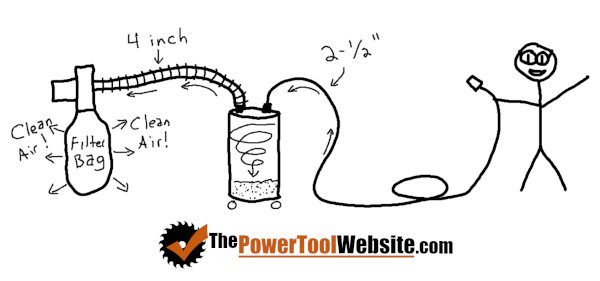Is dust collection really that important? Well, for small-shop woodworking, yes it is.
While the most important reason may be that we need to take care of our lungs, the reason I actually care most about is finish work.
In a small wood shop, your work area is also where you apply your finishes. And for me, that’s usually polyurethane.
Polyurethane + Dust = 2 Bad Days
So today I want to show you how to make a central dust collection system that’s simple to set up, but still versatile enough to work with multiple tools, and even your sanding station.


Dust collection works best when you have equipment that can handle 4″ hoses. When you couple that with a dust collector that has a 4″ intake, you can always add more pipe across your shop and still have impressive suction.
But for benchtop tools and sanders, you’ll be mostly dealing with 2-1/2″ and 1″ dust ports. This means the high-volume & high-suction we get from a 4″ system doesn’t apply… Or does it?
I’m gonna show you my system, which is a hybrid of the impressive 4″ dust collection setup, and has the versatility of 2-1/2″ and 1″ dust systems.
My particular setup is made from 5 basic components.
- Dust collector with 4″ intake
- Dust cyclone separator with 2-1/2″ ports
- 4″ dust collection hose
- 2-1/2″ dust collection hose
- Size reducers and clamps
What’s The Point Of These Components?
Dust Collector with 4″ intake
This is a standard size for dust collection, even though many woodworkers settle with a shop vac with a 2-1/2″ intake. (depending on if the label is for ID or OD, they may call it 2-1/4″)
When you move up to 4″, you can move more air, which means better suction and better dust extraction. Plus, it’s quieter.
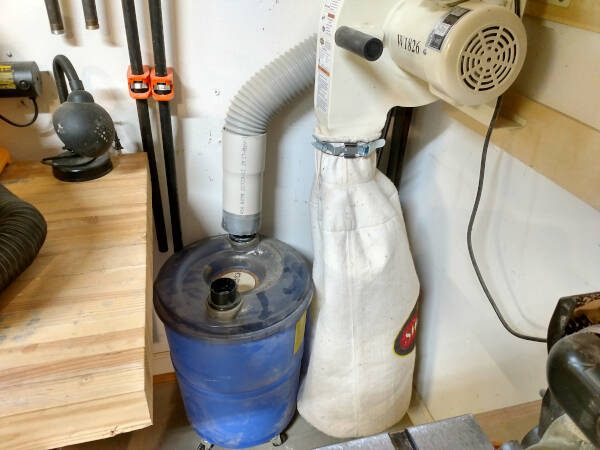

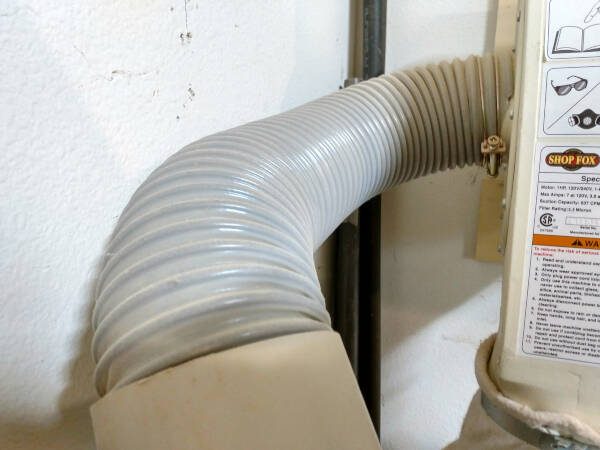

Using 2-1/2″ and 1″ hoses and adaptors slow down the airflow, basically acting like a choke point and reducing suction.
However, this is going to be necessary to hook to your benchtop tools and sanders. But the more hose you have at 4″, the less restriction you end up with, and the better performance you’ll get overall.
When you’re working with a dust collection hose that needs to be moved from tool to tool, and even used with your orbital and hand sanders, 2-1/2″ is much easier to work with.
So we want the 4″ intake dust collector for maximum suction, and we’ll only reduce to 2-1/2″ at the dust separator.
Cyclone Dust Separator
A regular dust collector will have a filter bag to capture the dust and filter the air as it does its job.
But if you’ve had the pleasure of emptying one of these dust bags, then you’ll appreciate anything that reduces the amount of dust going into that bag.
That’s where a dust separator comes in.
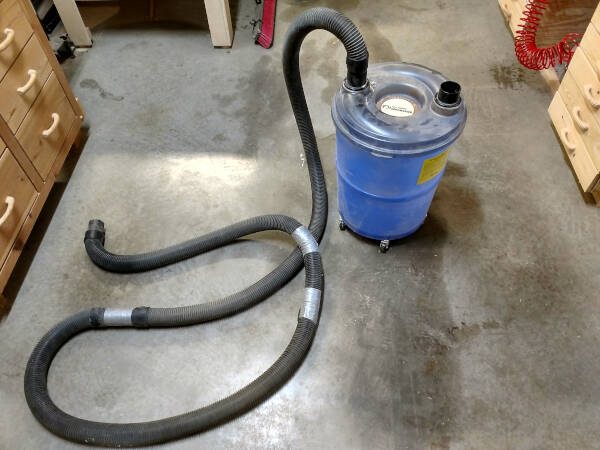

This will connect directly to your dust collector with a 4″ hose, however since it has 2-1/2″ ports, you’ll need an adaptor. More on that in a minute.
The separator has 2 ports, one where the air comes in from your tool, the other where the air goes out to the dust collector.
The cyclone separator is nothing more than a way to make the air moving through it swirl around like a tornado, leaving most of the dust falling down to the bottom of the container, and allowing cleaner air to leave the other port.
Any dust that makes it through the separator will be fine dust and most the heavier dust that takes up more space will remain in the container.
The one I use is a plastic tub and the lid is what connects to the hoses and creates the cyclone action. Here’s the underneath side of the lid:
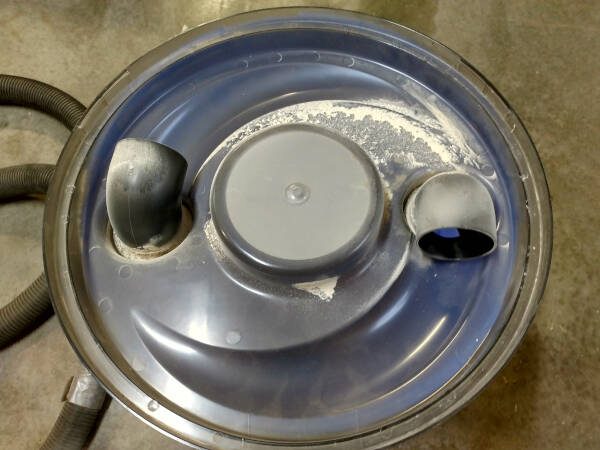

It’s helpful to have a separator on wheels, so you can roll it around where you need it. The 4″ hose connecting it to the dust collector will be flexible to make this possible.
While my setup doesn’t really allow for that, as my 4″ section is short and the separator stays in place.
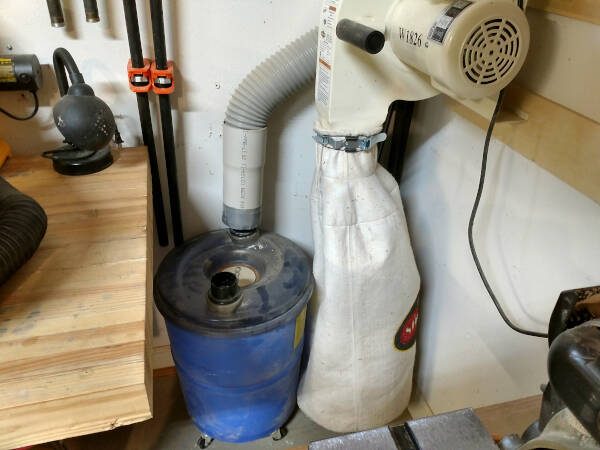

But if your shop allows for, it might make more sense to run a longer 4″ hose just so you can move the separator from station to station.
Reducing Connectors
The cyclone separator I use has 2-1/2″ ports on it. That means the 4″ hose from the dust collector won’t fit directly to it.
So these 4″ to 2-1/2″ adaptors are perfect:
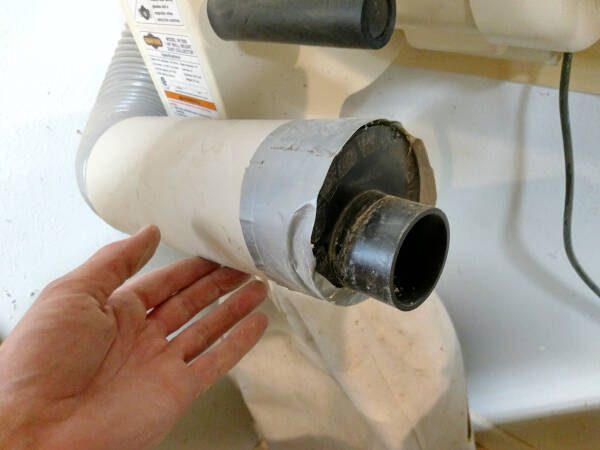

I used some leftover pvc piping to extend my 4″ hose a bit, then I taped the 4″ to 2-1/2″ adaptor (the black part in the picture) on to the pvc with duct tape.
You don’t need pvc for this setup, because the 4″ flexible hose should connect directly to the 4″ x 2-1/2″ adaptor. But this is just what I had laying around, and at the time, I ran short on 4″ hose.
On the other port of the cyclone separator, you’ll attach a flexible 2-1/2″ vacuum hose that is long enough to reach your bench top tools and your sanding station.
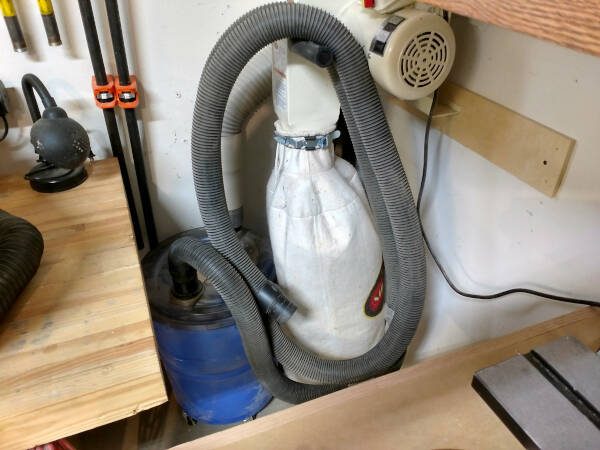

If you do like I mentioned above, and run a longer 4″ hose so you can roll the dust separator around from station to station, then your 2-1/2″ hose may not need to be that long.
It really just depends how much area you have to cover, and how spread out your benchtop tools are.
I laid my shop out so all my bench top tools are in one general area, and also close to my main work bench where I do most my sanding.
So I keep my cyclone separator out of the way next to my dust collector. Then I have about 10 feet of 2-1/2″ hose, which reaches everything I need.
If you need to extend your 2-1/2″ hose, duct tape works great for that too.
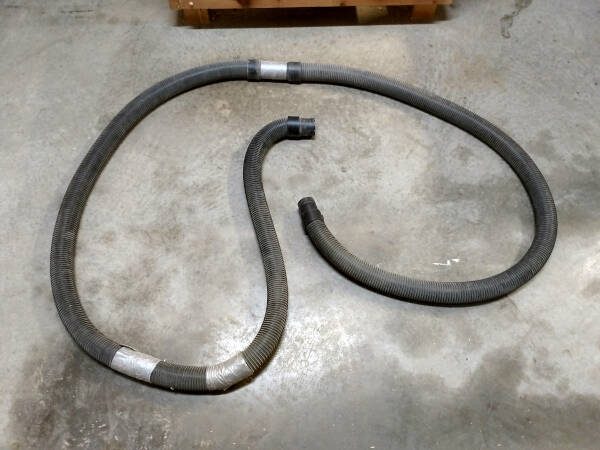

The hose itself should come with proper ends on it, that will fit snugly into standard 2-1/2″ dust collection ports.
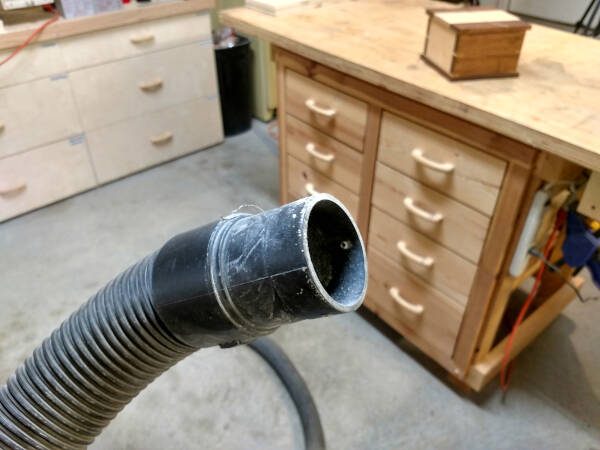

Here’s my dust collector hose attached to my various benchtop tools:
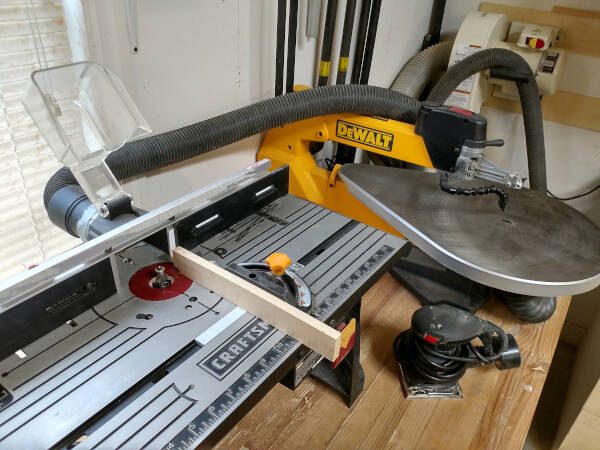

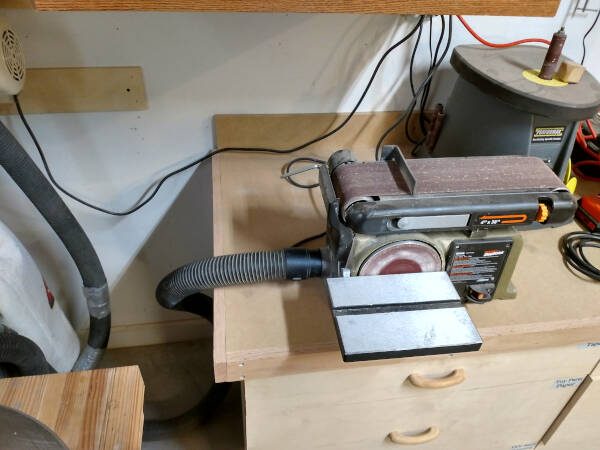

And with any tools that have a 1″ port, you’ll need another reducer. I bought this 2-1/2″ x 1″ reducer and attached it to the sander with 2 small wood screws.
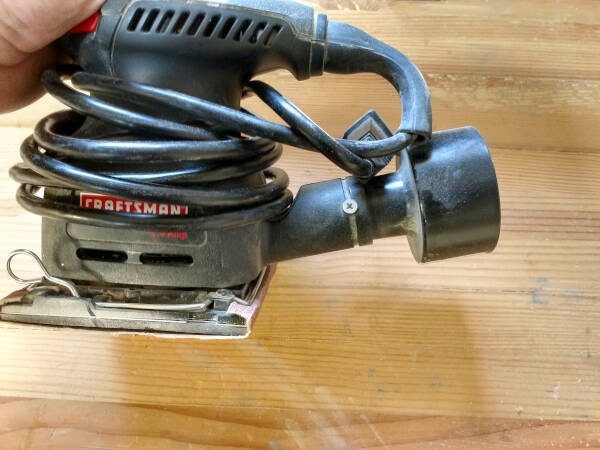

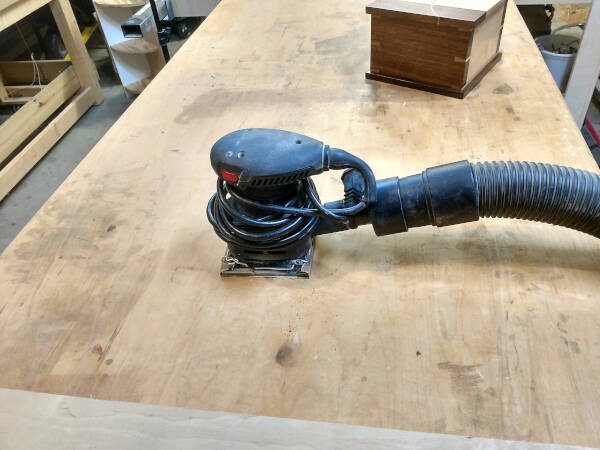

One more note:
You may find some of your tools have a random sized dust port, and probably came with a little dust bag that connects to it. These dust bags are basically worthless.
You’ll need to get an adaptor that fits the port, and if it ain’t tight, you can always snug it up with duct tape.
Dust Collection – Recap
I’ve created this sophisticated diagram to help you see the big picture. Notice how happy this makes the woodworker.
